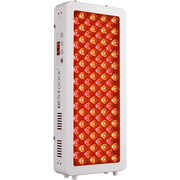Understanding Foot Neuropathy:
Foot neuropathy is a relatively complex neurological disease that can cause a variety of discomfort to patients and is not easy to detect at an early stage. It is also called peripheral neuropathy, which affects a single nerve or multiple nerves at the same time. The peripheral nerves carry messages between the central nervous system, the brain and spinal cord, and the rest of the body. For example, peripheral nerves can tell the body when the hand is cold. Dysfunction in peripheral nerves can result in a whole gamut of symptoms involving the foot, therefore reducing the quality of life of an individual.

Foot Neuropathy Causes:
- Diabetes
- Metabolic syndrome
- Overconsumption of alcohol
- Trauma
- Infections
- Autoimmune illnesses.
- Chemotherapy
Symptoms of Foot Neuropathy
Symptoms depend on the type of the foot neuropathy. The general symptoms that occur are:
- Numbness or tingling in the tips of your fingers or toes
- Abnormally high levels of sugar in the bloodstream may also, over time, damage the nerve endings and ultimately cause a dull, numb feeling in the legs. Typically beginning in the toes or fingertips and slowly radiating throughout the foot, this condition occurs gradually.
- Aching feet or calves
- Nerve damage can also cause pain that includes itching, burning, or aching with a feeling of pins and needles or tingling in the feet or lower legs. This pain often develops slowly and can intensify at night, which can disrupt sleep.
- Muscle weakness or a sensation of weakness
- Neuropathy of the foot can be so severe that it causes atrophy in the leg muscles. Weakened muscles lead to difficulty performing activities such as walking, standing, or climbing stairs, and it increases the risk of falling.
- Muscle atrophy in the legs
Nerve damage can cause the leg muscles to atrophy, making the leg look thin or deformed. Because the damaged nerves are unable to conduct signals effectively, the leg muscles are used less frequently and with less force, resulting in muscle atrophy. This condition is more common in people with diabetes and should be checked early to understand the condition.
- Foot ulcers or bedsores
Nerve damage can also make the skin of the legs sensitive and susceptible to external irritants and ulcers or bedsores. Prolonged compression or inappropriate shoe friction can lead to skin damage, while nerve damage may delay treatment by not being able to perceive pain or feel trauma in time.
- Transformational gangrene
If diabetic neuropathy is left untreated, it can develop into diabetic foot, which is a very serious complication. Diabetic foot often present with problems such as foot ulcers, gangrene, and even amputation.
Foot Neuropathy Treatment
The treatment of neuropathy of the foot is based on medications and physical therapy, lifestyle modifications, and alternative therapies. Most medications given are pain relievers, with anticonvulsants and antidepressants having only partial relief. Physical therapy may decrease pain, but it is usually not enough for severe conditions. Lifestyle modifications such as diet and exercise are critical but require lifelong commitment and discipline to carry them out. Other alternative therapies are mixed in efficacy and do not have robust scientific support, including acupuncture and herbal supplements. Generally, current treatments have limited effectiveness and side effects.
The Science Behind Red Light Therapy for Neuropathy:
A newer approach, tackling foot neuropathy with red light therapy, seems very promising. Many people's understanding of red light therapy may still be limited to sunbathing. But in fact, humans have been able to scientifically apply red light therapy to the health and treatment of diseases. Red light therapy is a low-level light that emits a red and near-infrared wavelength (630–850 nm), which promotes cellular repair in foot tissue. It may reduce pain and inflammation while also promoting nerve healing.
Let's take a look at red light therapy's effectiveness for peripheral neuropathy and long-term benefits.
Inflammation Reduction:
Red light therapy helps with neuropathic pain by controlling inflammation, which is a significant cause of the condition. Red and near-infrared light that goes through the skin activates cells to produce many molecules against inflammation and reduces pro-inflammatory cytokines. The process reduces overall inflammation, pain, and discomfort in neuropathy cases. The remarkable symptomatic relief improves the quality of life and reduces chronic pain.
Improving Circulation:
Effective blood circulation is essential for nerve repair, delivering nutrients, and removing waste products. Red light therapy increases blood flow by stimulating vessels to expand. The improved circulation allows the neural tissue to recover quicker and reduces the symptoms of diabetic neuropathy. Red light therapy boosts the nerve's conductivity, allowing it to heal more quickly and alleviating underlying symptoms in the long run.

Daily Routine Integration:
Patients with foot neuropathy can easily include red light therapy in their daily routine.
- Set a Regular Schedule: This will help you maintain a regular schedule for your red light therapy treatment, like mornings or before bed.
- Session Duration and Frequency: Normally, an ideal red light therapy session takes about 20–30 minutes per area and 3-5 times every week. This frequency provides optimal benefits while giving your body enough time to react to the administered therapy.
- Comfortable Environment: Find a comfortable and quiet location to relax during the session. Ensure that your device is correctly placed and that you use it correctly as per the instructions given by the company.
- Combining with Other Activities: Use the therapy along with the meditation to promote whole-body nerve relaxation.
- Track Progress: Keep a diary documenting your performance and your symptoms. It can help you and your healthcare provider determine the effectiveness of the therapy.
Safe and Non-Invasive Alternative
Red light therapy is a medication- and surgery-free alternative for the treatment of foot neuropathy. No pain or downtime is involved in the therapy process, which appeals to so many of its sufferers. RLT devices usage has a strong safety profile and is easy for patients to fit into their daily lives. They are created for use at home and are user-friendly; therefore, a person can manage their therapy not only conveniently but also effectively.
Consulting with Healthcare Providers:
A person should speak to their healthcare provider before starting red light therapy. The doctor can detail a health plan specific to conditions and overall health and inform one how long and often the sessions need to be conducted to get the most out of the procedure. Speaking with a healthcare provider may address potential contraindications and safely integrate red light into a more comprehensive treatment plan.
Conclusion:
Light has a huge impact on the human body, and, at the same time, it has a bright potential for therapeutic advantage. Red light therapy comprehensively deals with symptom relief and enhancing the quality of life in patients with foot neuropathy. By bringing down inflammation, increasing blood circulation, and stimulating cellular repair, this very safe and non-invasive treatment becomes a beacon of hope for many sufferers to take control of their lives once again. By integrating red light therapy into standard routines, consulting healthcare providers, and following personalized advice, patients can enjoy a comfortable and active lifestyle.
References
[1] Castelli, G., Desai, K. M., & Cantone, R. E. (2020). Peripheral Neuropathy: Evaluation and Differential Diagnosis. American family physician, 102(12), 732–739.
[2] Oh S. J. (2007). Neuropathies of the foot. Clinical neurophysiology : official journal of the International Federation of Clinical Neurophysiology, 118(5), 954–980. https://doi.org/10.1016/j.clinph.2006.12.016
[3] Wang, J. Y., Huang, Z. Q., Deng, H. P., Zhao, L., Deng, H. Y., Liu, J. P., Shen, X. Y., & Cheng, K. (2022). Low level light therapy/photobiomodulation for diabetic peripheral neuropathy: protocol of a systematic review and meta-analysis. BMJ open, 12(9), e059476. https://doi.org/10.1136/bmjopen-2021-059476
[4] Salvi, M., Rimini, D., Molinari, F., Bestente, G., & Bruno, A. (2017). Effect of low-level light therapy on diabetic foot ulcers: a near-infrared spectroscopy study. Journal of biomedical optics, 22(3), 38001. https://doi.org/10.1117/1.JBO.22.3.038001














 Small
Small

 Moderate
Moderate

 Moderate
Moderate

 Moderate
Moderate

 Full
Full



